A plucky little survivor that outlived the railroad that brought it to life, this little manufacturing building from 1894 abutted the now built-over Chicago & Evanston branch of the Milwaukee Road railroad that once wound its way through Lakeview. The Gunderson Manufacturing Company undoubtedly selected this site for its rail access when they built this facility in 1894. A bunch of light manufacturing companies cycled through the building over almost a century, including the Russian Oil Company from the 1920s to the 1970s, but service on this section of the railroad ended in the 1980s. With industry leaving Lakeview and the neighborhood gentrifying, there were only two realistic options here: demolition or a loft conversion. Thankfully, we got the latter–Kenneth Schroeder of Schroeder Murchie Associates (now SMNG A) converted it into residential lofts in the late 1980s.

Changes? Fewer than you'd expect, given the building's utilitarian nature and the way the neighborhood has changed over the last 130 years. A few bricked in windows and doors, that small metallic penthouse added up top, that faux-industrial sheet metal around the front door...but otherwise, still very recognizable, even after the conversion to condos.

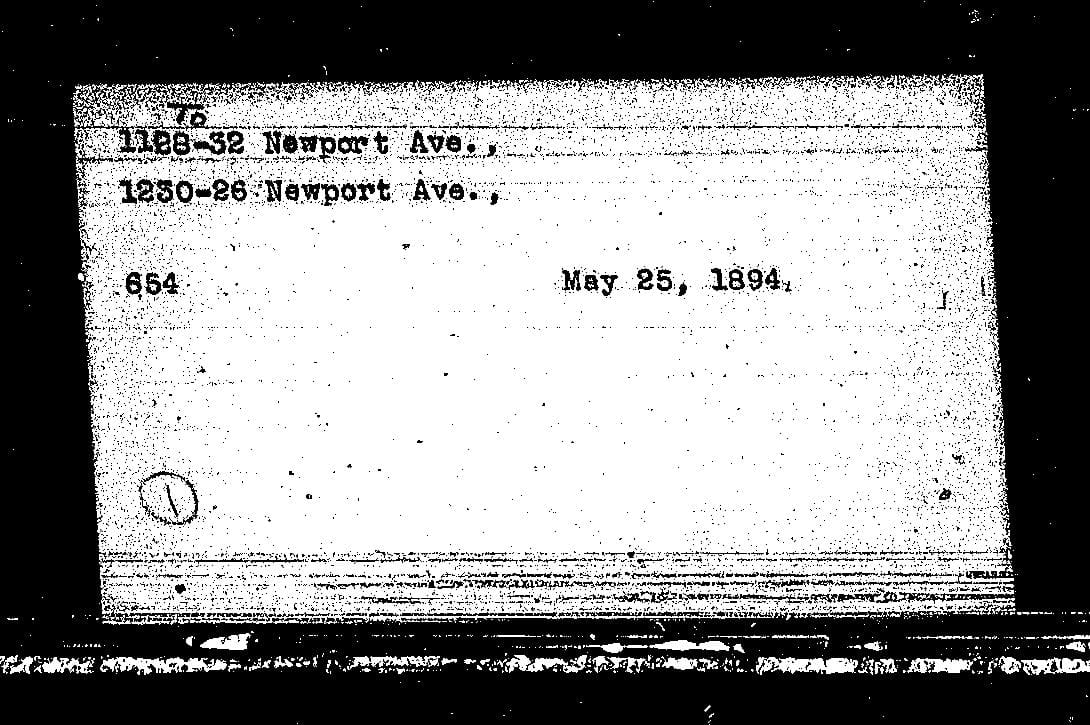
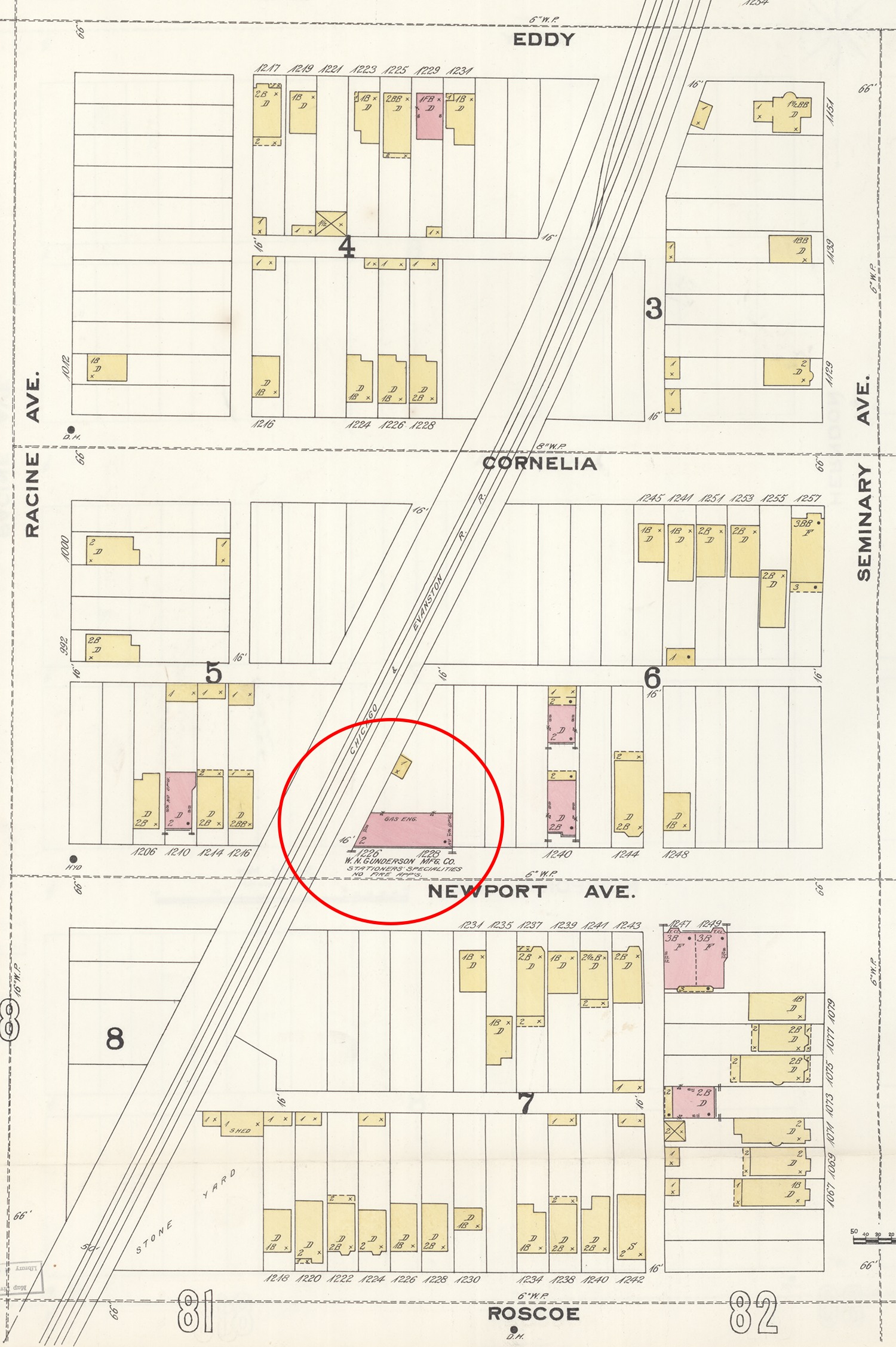
The card pointing to the building permit in the street index ledger | 1894 Sanborn Map
The Chicago & Evanston Railroad had already opened in the 1880s, so this triangular lot already had access to rail when the Gundersons bought it in 1892. Two years later they received a building permit for their manufacturing facility here (although I can't find the actual permit itself). The Gunderson Manufacturing Co., a family company founded by Norwegian-American brothers Walter & Fremont Gunderson, produced blank books and other stationary products. After they moved out, the building was briefly home to Standard Earth Auger and the A.E. Wright Co., amongst others (A.E. Wright, a mayonnaise maker, would be one of Kraft’s first acquisitions in 1928).
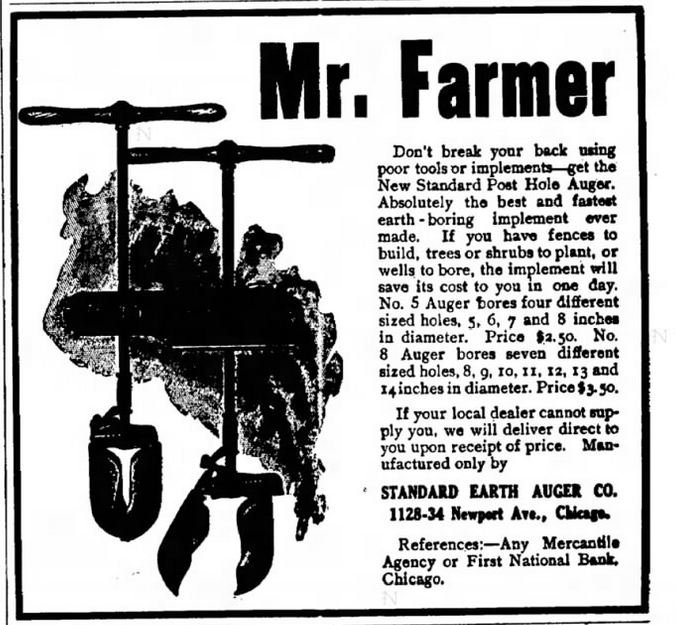
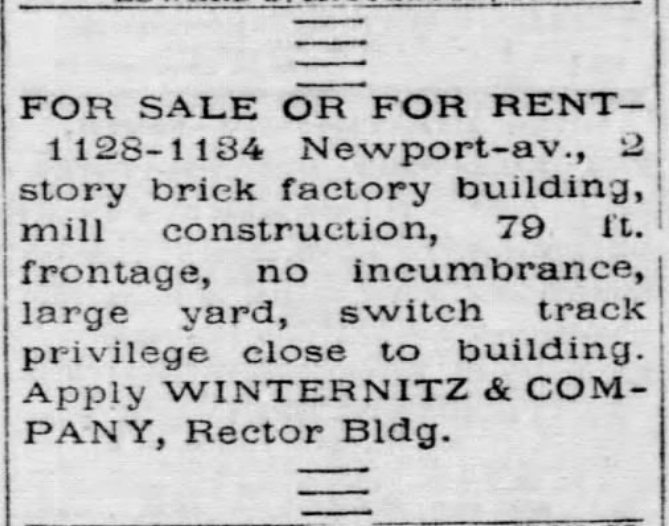
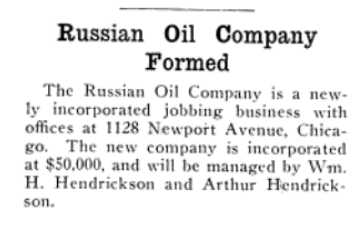
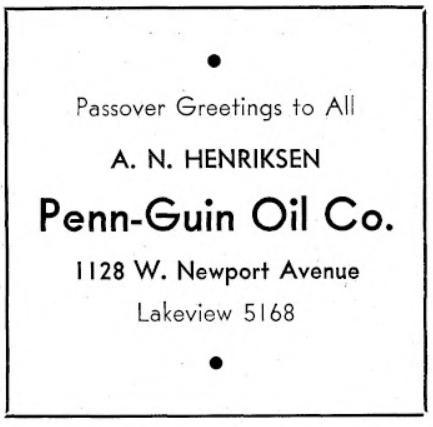
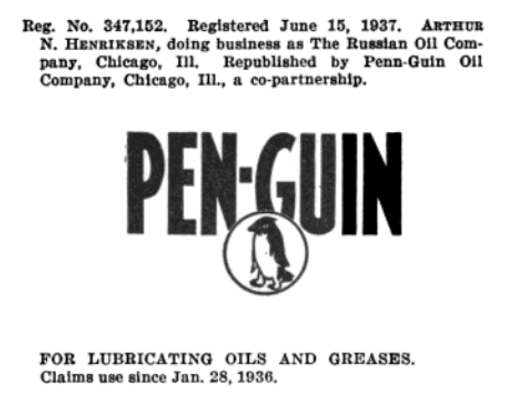
1910 Standard Augur Co. Ad | 1916, building for sale or rent ad | undated, the Russian Oil Co. formed | 1946 Passover greetings from Penn-Guin in the Jewish Sentinel | 1948 trademark registration
An addition was added to the back in the early 1920s, roughly doubling the building's size, and the Russian Oil Company moved in. A marketer of lubricating oils and greases under the Penn-Guin Oil trade name, the company would be located here into the 1970s. It remained a freight rail customer of the Milwaukee Road until the 1973 Oil Crisis killed the company. Even if they had survived that crisis, Penn-Guin likely would've had to move anyway–the rail access that attracted light manufacturing to the area in the first place was disappearing.
With street running and freight service on the L, the Lakewood Branch of the Milwaukee Road is one of Chicago's most fascinating abandoned rail lines. It ran from Clybourn to Lakewood, curving towards Wrigley Field, then up onto the L tracks at the old Buena Yard before Wilson. ...yeah, for a few decades the CTA actually moved freight on the L tracks.
By the 1970s, though, the Milwaukee Road hoped to abandon this line–operating it lost them money. However, with a few dozen companies like Penn-Guin still completely dependent on it for deliveries, the government mandated the railroad remain open and honor their contracts with those customers. The railroad repeatedly failed with petitions to the Interstate Commerce Commission asking for permission to abandon the line in the 1970s and early 1980s.
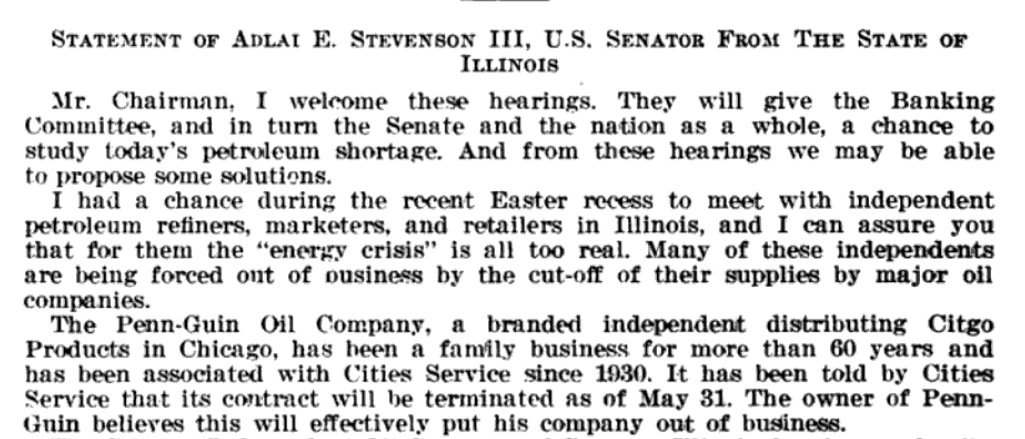
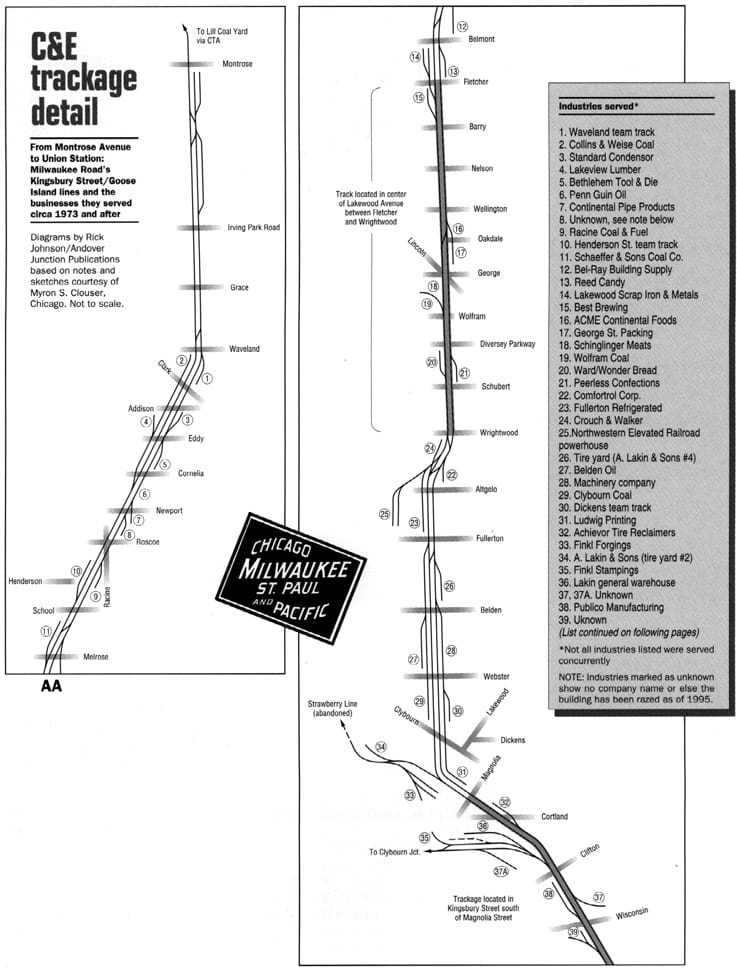
Sen. Adlai Stevenson name-checks Penn-Guin in a senate hearing about the oil crisis | map of Milwaukee Road freight customers on the C&E trackage, including Penn-Guin
Lakeview was gentrifying anyway, though. As it became more uniformly residential, those industrial clients were leaving–dealing with neighbors was a hassle and their land grew increasingly valuable. Moving north to south, the railroad abandoned more and more of this right-of-way over the years as their customers left. Only a handful of industrial users remained after Penn-Guin closed, and in 1982 the railroad abandoned the right-of-way behind this building. Service continued south of Diversey for another couple decades, with Peerless Confectionery on Lakewood and Schubert the final rail customer–the last train rolled down Lakewood Avenue in 2007. You can see traces of the Chicago & Evanston Railroad in things like the odd triangular shape of this building, some quirky alleyways, and the inexplicable width of Lakewood Ave, but the residential growth of Lakeview is slowly erasing what’s left.
With this rail right-of-way abandoned in 1982 and the factories all moved out, this building was likely a prime tear-down candidate. However, with lofts trendy with the yuppie crowd moving into Lakeview and the sheer amount of newly developable land, we got adaptive reuse instead. In the late 1980s, prolific loft converter Ronald Schipka developed this as "Cornelia Village", a full city block between Newport Avenue and Eddy Street which converted the old factories into lofts and put new-builds on the empty right-of-way. While the Russian Oil Co. Building was part of the Cornelia Village planned development, this was the one building not done by Schipka's team. Kenneth Schroeder of Schroeder Murchie Associates (now SMNG A) designed and marketed this one.
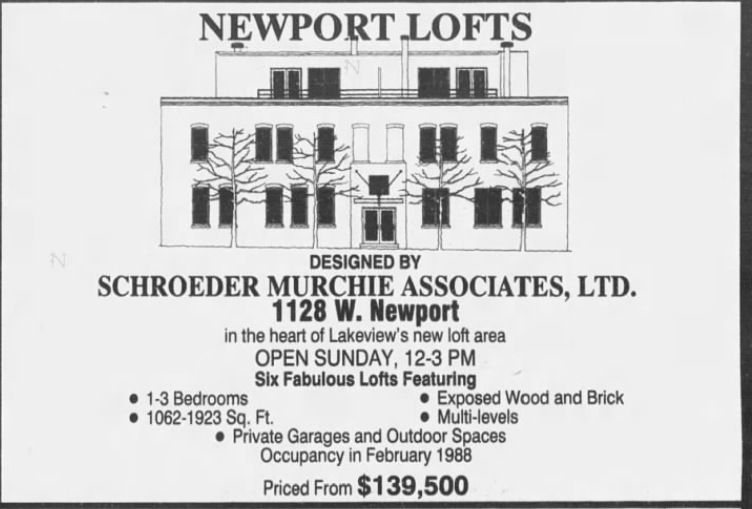
Production Files
Further reading:
- "Industrial Displacement: Here Come the Gentry . . . There Goes the Neighborhood" in the Chicago Reader in 1987, about the companies being squeezed out of the corridor
- More on the Chicago & Evanston Railroad at Industrial Scenery
- Various posts about the Lakewood Branch at Chicago Switching
- John R. Mika's work on the Lakewood Branch
- Freight operations on the L
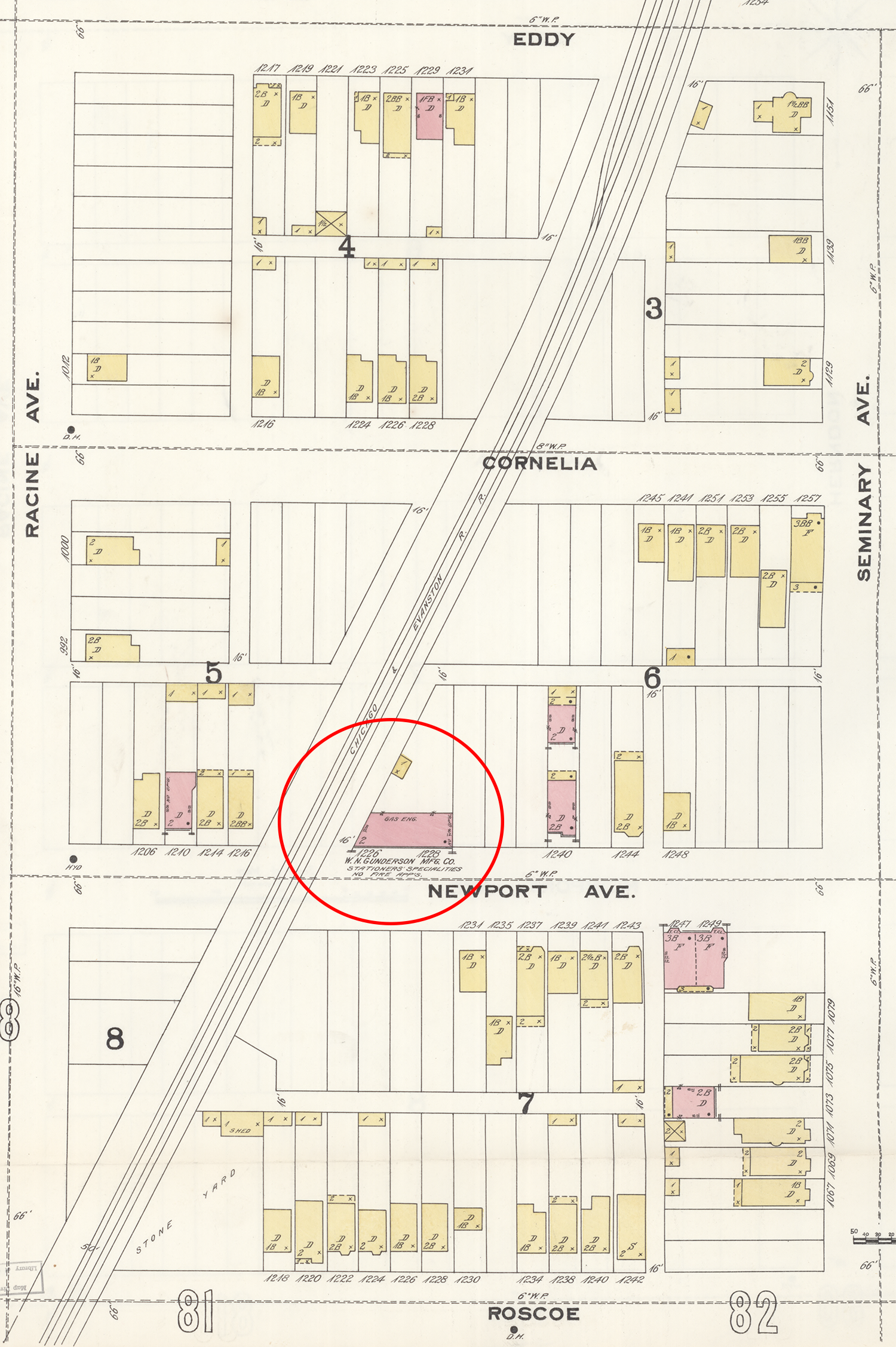
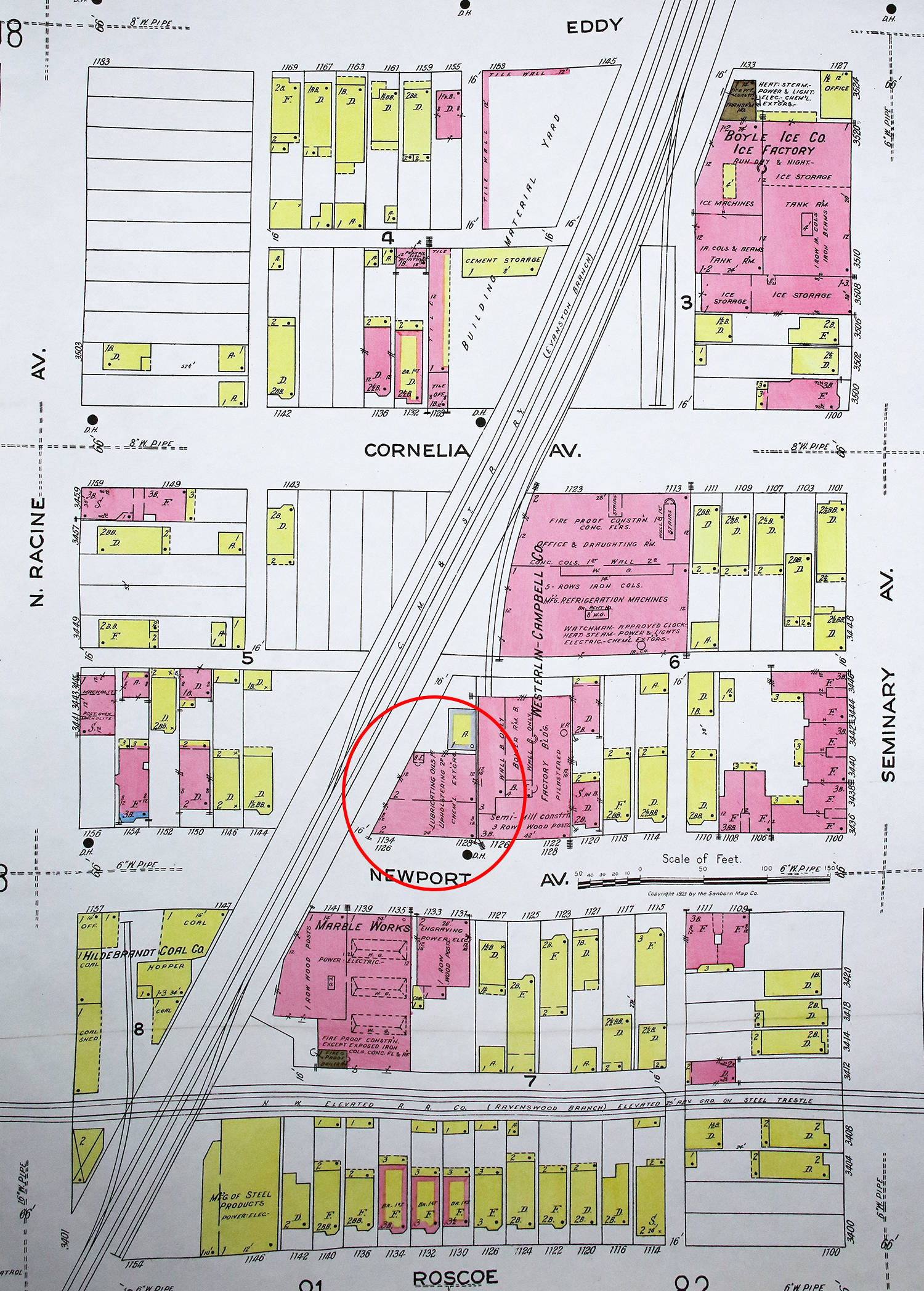
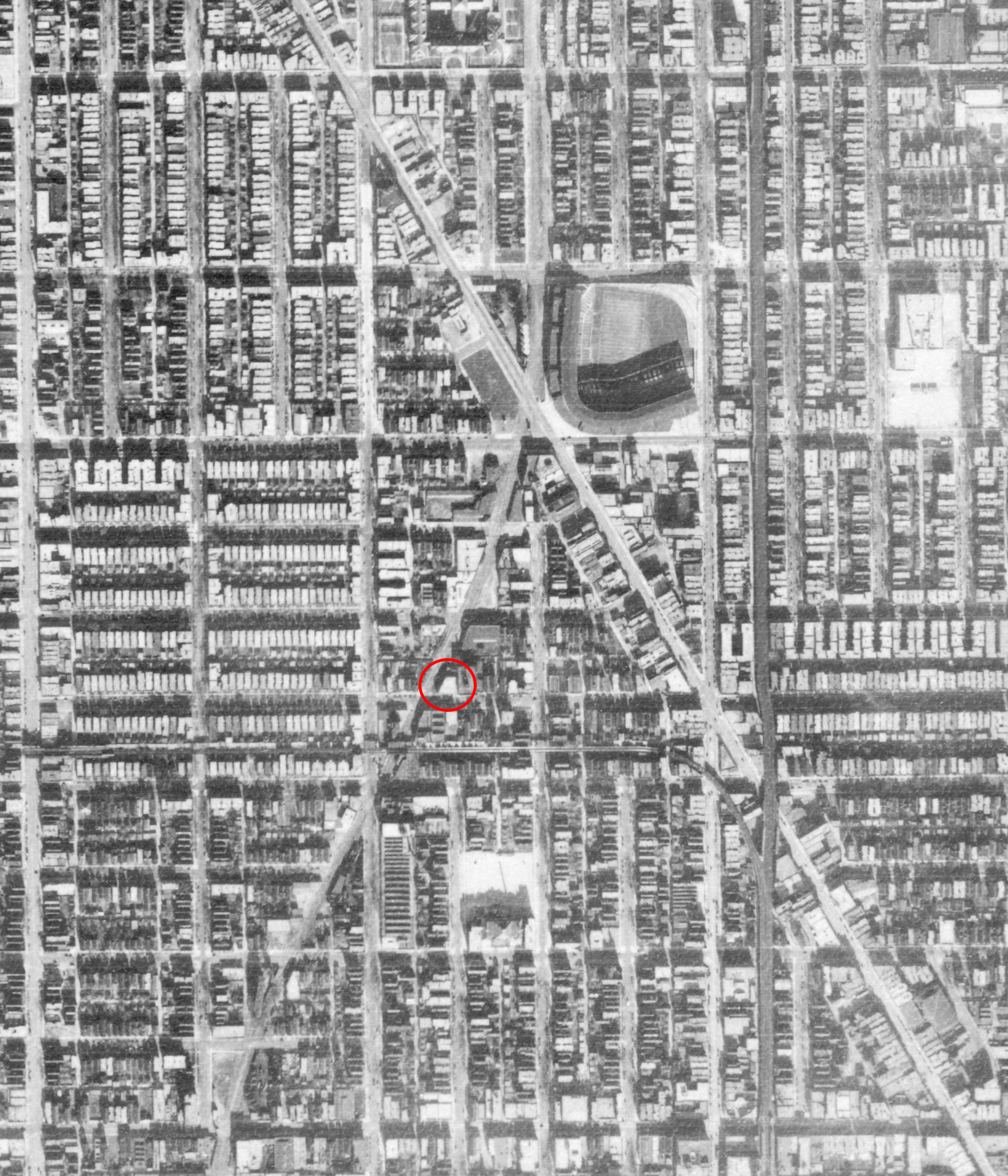
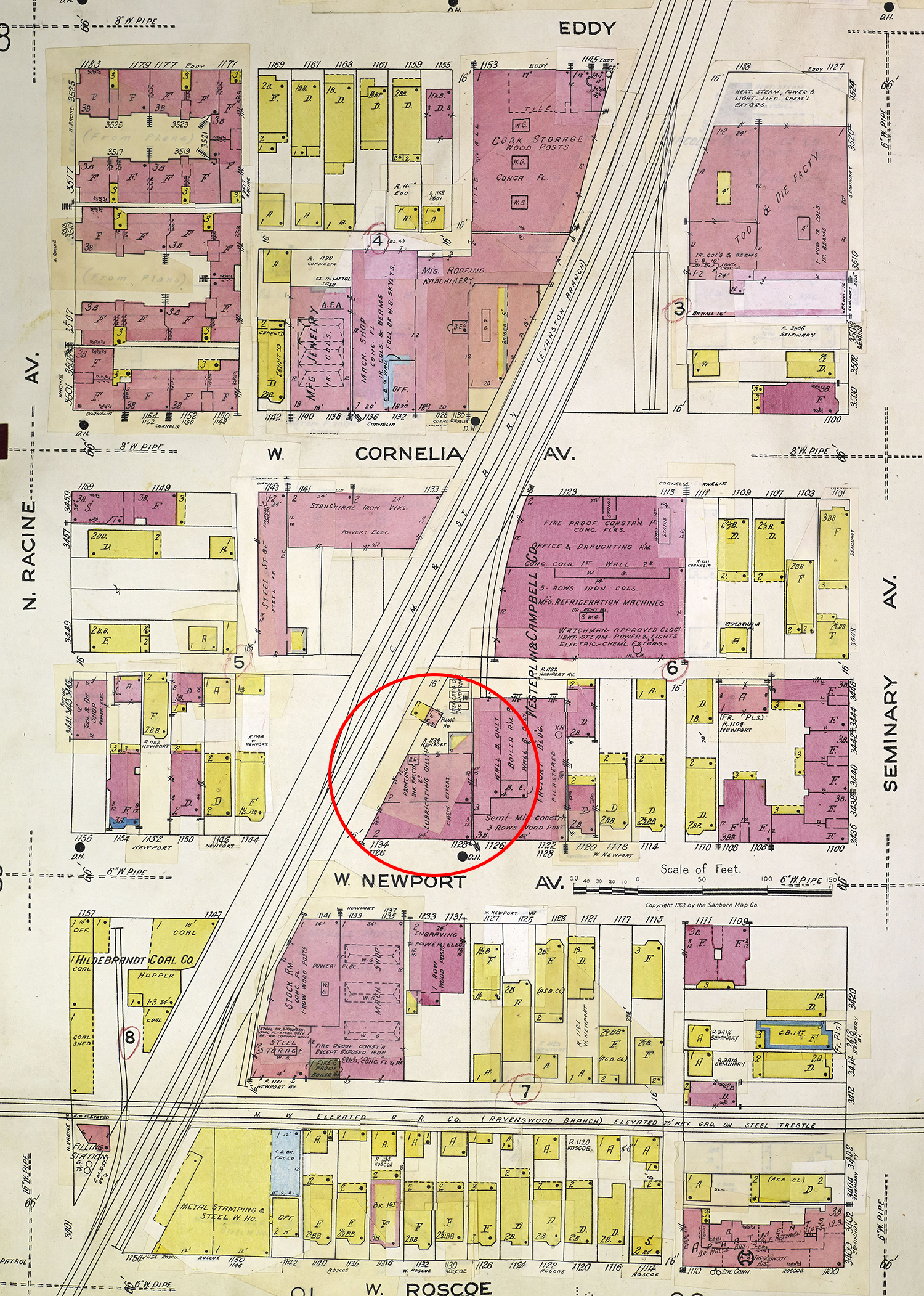
1894 Sanborn Map | 1923 Sanborn Map | 1938 aerial | 1950 Sanborn Map



Member discussion: